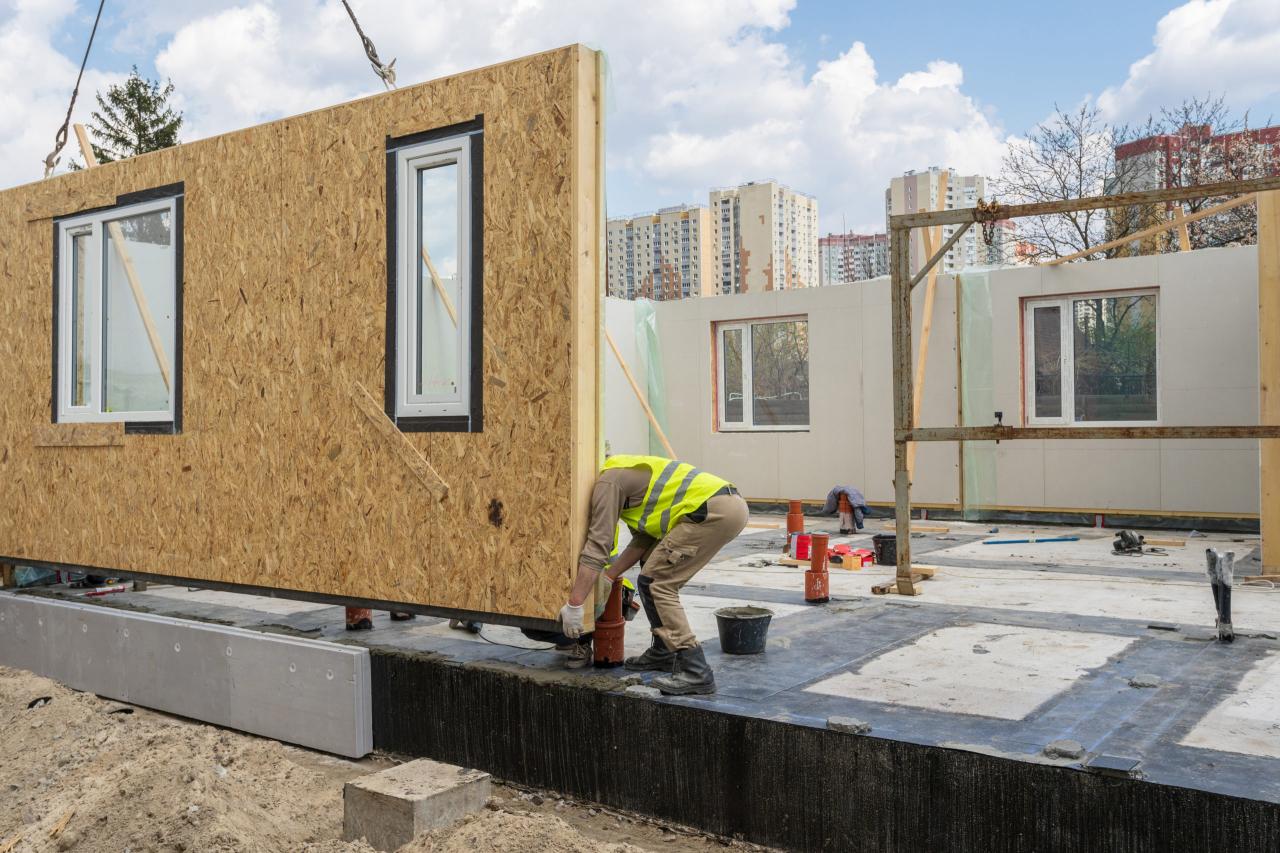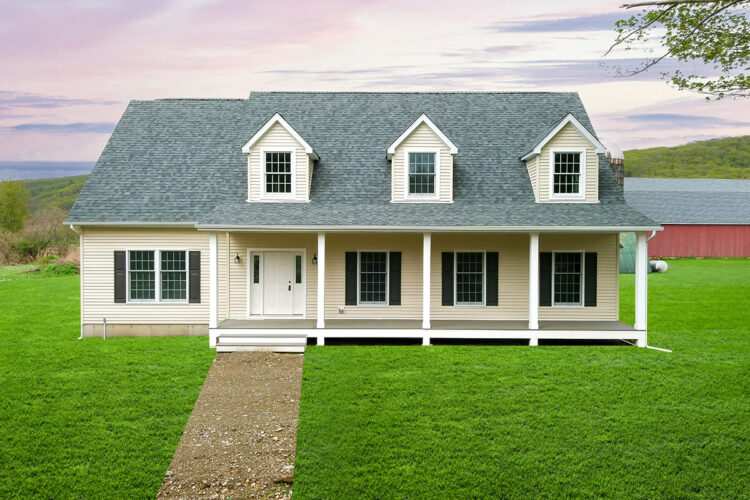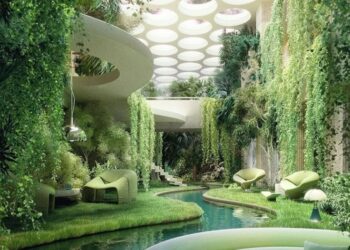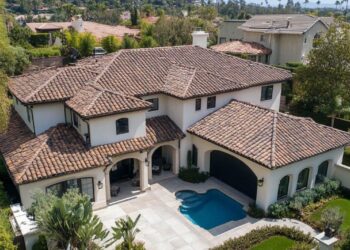The Secrets Behind the Modular Homes Construction Boom
In the dynamic world of real estate and construction, a silent revolution has been taking place. Once considered a niche, often misunderstood option, modular homes have exploded in popularity, transforming the way we think about building and living. This isn’t just a fleeting trend; it’s a fundamental shift driven by a combination of technological advancements, economic pressures, and changing consumer desires. The modular construction boom is a story of efficiency, sustainability, and innovation, and understanding its secrets is key to grasping the future of housing.
At its core, modular construction is a process where buildings are constructed off-site, in a controlled factory environment, in pre-fabricated sections or “modules.” These modules are then transported to the final building site and assembled on a prepared foundation. This method stands in stark contrast to traditional stick-built or on-site construction, where every aspect of the build, from framing to finishing, happens outdoors, exposed to the elements.
The shift towards this off-site method has been propelled by a confluence of factors, each contributing to its undeniable rise. We’ll delve into the foundational principles and strategic advantages that make modular construction not just a viable alternative, but often, a superior choice.
I. The Core Principle: A Manufacturing Mindset
The first and most significant secret to the modular boom is the application of a manufacturing mindset to construction. Traditional building is a craft-based, often unpredictable process. It’s subject to weather delays, material shortages, and labor inconsistencies. By moving the process indoors, modular construction adopts the principles of a factory assembly line.
A. Quality Control: In a climate-controlled factory, builders aren’t contending with rain, snow, or extreme heat. This ensures that materials are kept dry and stable, and work can proceed without interruption. The controlled environment allows for stricter quality control checks at every stage. For example, a framing crew can work on a module’s walls with precision, knowing that the wood won’t swell from rain or crack from sun exposure. This level of oversight reduces the likelihood of structural issues and defects, leading to a higher-quality, more durable final product.
B. Waste Reduction: On a typical construction site, a significant amount of material is wasted due to offcuts, damage, and poor planning. A factory setting, however, allows for precise cuts and the reuse of scrap materials. This lean manufacturing approach minimizes waste, making modular construction a more environmentally friendly option. Material ordering is more accurate, and surplus materials can be used for the next project, eliminating the need for large, on-site dumpsters and reducing landfill contributions.
C. Economies of Scale: A modular factory can produce multiple homes simultaneously, leveraging bulk purchasing power for materials like lumber, drywall, and wiring. This bulk buying translates into lower costs per unit, a saving that can be passed on to the consumer. Furthermore, the specialized tools and machinery within a factory allow for repetitive tasks to be done with greater speed and accuracy, increasing overall productivity.
II. The Speed Advantage: Time is Money
In the world of construction, time is a critical factor, not just for project deadlines but for financial viability. Modular construction fundamentally changes the timeline. While the foundation and site preparation are being completed on-site, the home’s modules are being built in the factory.
A. Parallel Processes: This is the most powerful time-saving element. With traditional construction, the framing can only begin after the foundation is poured and cured. With modular, the two processes happen concurrently. By the time the foundation is ready, the home’s modules are often 80-90% complete, including plumbing, electrical, and even interior finishes like cabinetry and flooring.
B. Reduced On-Site Assembly: Once the modules arrive at the site, the assembly process is remarkably quick. A crane lifts the modules into place, and a small crew works to connect the sections, or “marry” the modules. This phase, often called “set day,” can take as little as a single day. The remaining on-site work—sealing the seams, connecting utilities, and finishing siding—is minimal compared to a full ground-up build. This significantly reduces labor costs and the duration of on-site disruption.
C. Predictable Schedules: Weather is a major variable in traditional construction, leading to unpredictable delays. Since the majority of the work is done indoors, modular builders can offer highly predictable timelines. A project that might take 6-12 months for a traditional build can often be completed in as little as 3-5 months with modular methods. This predictability is invaluable for both homebuyers eager to move in and developers managing project portfolios.
III. The Sustainability Edge: Building for a Greener Future
As climate change and environmental concerns become more urgent, the sustainability of our housing choices is more important than ever. Modular construction is at the forefront of this movement.
A. Energy Efficiency: Modular homes are often built to a higher standard of airtightness than traditional homes. The precise construction in a factory setting minimizes gaps and leaks, leading to superior insulation and energy performance. This can result in significant long-term savings on heating and cooling costs for the homeowner. Many modular builders also use advanced insulation techniques and materials, further enhancing the home’s energy efficiency.
B. Material Conservation: As mentioned earlier, the factory environment is optimized for minimizing waste. This is not just a cost-saving measure but a huge environmental benefit. Less material is sent to landfills, and the use of recycled or sustainably sourced materials is easier to implement on a large scale.
C. Lower Environmental Impact on Site: The on-site phase of a modular build is short and low-impact. There is less heavy machinery on the property for extended periods, reducing soil compaction and disruption to the local ecosystem. The minimal on-site work also means less noise and air pollution for neighboring communities.
 IV. The Financial Appeal: Unlocking Affordable and Predictable Pricing
IV. The Financial Appeal: Unlocking Affordable and Predictable Pricing
One of the most compelling secrets behind the boom is modular construction’s ability to offer a more predictable and often more affordable path to homeownership.
A. Fixed Pricing: Because most of the construction happens in a factory with established processes, the builder can provide a firm, fixed price for the home’s modules and finishes. This eliminates the “cost creep” that is so common in traditional construction, where unexpected issues or material price fluctuations can balloon the final budget. Homebuyers know exactly what they’re paying for from the start, making financial planning much easier.
B. Reduced Labor Costs: The efficiency of the assembly-line process means fewer hours are spent on labor for each home. This, combined with the quick on-site assembly, directly translates into lower labor costs. In a time of skilled labor shortages, this is a significant advantage.
C. Less Risk of Theft and Vandalism: A traditional construction site is an open target for theft of materials and tools. Modular homes, being built in a secure factory, are not subject to these risks, which can be a hidden cost in traditional builds, often leading to increased insurance premiums.
V. The Design Flexibility: Beyond the “Boxy” Stereotype
The biggest misconception about modular homes is that they are limited to a few standard, uninspired designs. The reality is quite the opposite. Modern modular construction allows for an extraordinary degree of design flexibility.
A. Customization: Today’s modular builders work with architects to create a vast range of styles, from modern and minimalist to traditional and rustic. You can choose different layouts, exterior finishes, window styles, and interior options. The “Lego” nature of the modules allows for complex floor plans, multi-story homes, and unique configurations that can be tailored to a specific plot of land or a homeowner’s personal taste.
B. High-End Finishes: Modular homes are no longer synonymous with low-quality finishes. Builders now offer a wide selection of high-end options, including granite countertops, hardwood floors, stainless steel appliances, and custom cabinetry. The quality and luxury of a modern modular home are virtually indistinguishable from a custom-built, stick-built home.
C. Architectural Innovation: Architects are increasingly embracing modular methods to create innovative, sustainable, and aesthetically striking homes. The ability to control every aspect of the build in a factory allows for the creation of intricate designs that would be difficult and expensive to achieve on-site.
 VI. The Technological Integration: Building Smarter Homes
VI. The Technological Integration: Building Smarter Homes
The final secret to the modular boom is the integration of advanced technology. Modular construction is a perfect fit for smart home technologies, from pre-wired electrical systems to integrated home automation.
A. Smart Home Readiness: It’s much easier to install a comprehensive smart home system in a controlled factory environment. Wiring can be laid out with precision, and systems for security, lighting, and climate control can be pre-configured before the modules even leave the factory. This makes the final on-site setup a breeze.
B. Digital Twins and BIM: Many modular builders are now using Building Information Modeling (BIM) to create a “digital twin” of the home. This 3D model allows architects and engineers to identify potential conflicts and optimize the design before construction even begins. This level of precision and planning is a major reason for the speed and accuracy of the build process.
C. Robotics and Automation: While human craftspeople are still central to the process, some modular factories are beginning to use robotics for repetitive or heavy tasks, such as cutting lumber or lifting large wall sections. This further increases efficiency and safety, while also ensuring a level of precision that is hard to achieve manually.
Conclusion
The modular homes construction boom is not a fluke; it’s a logical and powerful response to the challenges of modern building. By embracing a manufacturing mindset, leveraging parallel processes, prioritizing sustainability, offering predictable financial models, and allowing for remarkable design flexibility, modular construction has proven it can deliver high-quality, efficient, and beautiful homes. The secrets behind its success are transparency, efficiency, and a commitment to building a better, more sustainable future. As more people discover these advantages, it’s clear that the future of homebuilding lies not on a muddy construction site, but in a clean, state-of-the-art factory.










